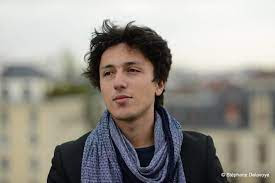by Karl Nehring
Impromptus. Fauré: Impromptu No. 1 in E-Flat Major, Op. 25; Chopin: Impromptu No. 1 in A-Flat Major, Op. 29; Fauré: Impromptu No. 2 in F Minor, Op. 31; Chopin: Étude in F Minor, Op. 25; Fauré: Impromptu No. 3 in A-Flat Major, Op. 34; Chopin: Fantaisie-Impromptu in C-Sharp Minor, Op. 66; Fauré: Impromptu No. 4 in D-Flat Major, Op. 91; Chopin: Impromptu No. 2 in F-Sharp Minor, Op. 36; Fauré: Impromptu No. 5 in F-Sharp Minor, Op. 102: Chopin: Impromptu No. 3 in G-Flat Major, Op. 51; Fauré: Impromptu No. 6 in D-Flat Major, Op. 86; Chopin: Berceuse in D-Flat Major, Op. 57; Fauré: Improvisation in C-Sharp Minor, Op. 84; Ismaël Margain: Improvisation. Ismaël Margain, piano, naïve V7860
The French pianist Ismaël Margain (b. 1992) says in the liner booklet that the idea for this new recording first came about “when I chanced upon Fauré’s impromptus four years ago, when I was looking for a repertoire. It is astonishing to see how rarely this composer’s piano music is played in his own country, and the impromptus are, with the exception of the third, largely unknown. Compared to Debussy and Ravel, Fauré is much less in the limelight. On reading the impromptus, I was immediately struck by their beauty, by a desire to play them, and by how close the first three were to the language of Chopin… So I looked again at Chopin’s impromptus with the idea of juxtaposing them with Fauré’s.” Chopin wrote a total of four impromptus, while Fauré wrote a total of six. Margain has organized his program around similar tonalities, and to further balance the program and ensure the strict alternation between the two composers, Margain also adds the Chopin Étude op.25 no.2 in F minor, Berceuse op.57, and the Fantaisie-Impromptu.
Tomer Cohen: Not the Same River. Not the Same River; Connecting Dots; Hithadshut (Regeneration); Empty?;Pastures; Sunrise; Probably More Than Two; First Laps. Tomer Cohen, guitar; Matt Penman, Bass; Obed Calvaire, drums. Hypnote Records HR028
The Israeli-raised New York-based guitarist-composer Tomer Cohen (b. 1996) makes his debut as a leader with Not the Same River, an album that serves as another example of how jazz can be viewed as a form of chamber music. Sometimes classical music folks have a misguided idea that jazz is mostly improvisation, played by people who really do not know much about music theory and are just kind of getting together and making it all up as they go along. This is most assuredly not the case; in fact, the majority of professional jazz musicians are well-versed in the nuances of music theory. Their ability to improvise grows out of their knowledge of chords, scales, modes, transpositions, key changes, meters, rhythms, and such – plus plenty of practice, practice, practice. And you’d be surprised at how many top jazz musicians are also fans of classical music. But I digress…
Although Cohen composed all of the selections on this recording, and his guitar takes the spotlight in term of melodic invention, Penman’s bass and Calvaire’s drums provide more than merely rhythmic support, as the three musicians listen to and play off each other with drive and intensity. Cohen plays his guitar with an unusual technique of playing single notes with a pick between his thumb and forefinger while simultaneously chording and playing counterpoint with his three remaining fingers, which allows him to play arpeggios and melody lines while comping for himself. This gives him a smooth, tuneful sound that has an easy, natural flow to it
There is a consistency of sound throughout the album, as Cohen does not strive for effects or far-out sounds from his guitar. He maintains a consistent guitar tone throughout. The overall mood of the tunes does not vary much, either. That is not to say they all sound the same; rather, that there is an overall feeling or mood to the album that seems to point to a point to a single vision. Cohen says of the album, “I used to play outside with my guitar, watching the fields and the blue sky. I believe some of that vibe is reflected in some of the tunes on this record.” For example, he points to the tune Pastures as an example of offering a sense of place. “I’m trying to get the listener to see the place where I wrote the song. Basically, I’m saying to the listener: ‘Close your eyes and imagine that you’re sitting on a high hill. You see the green fields and you can see the wind move them like the waves in the sea. Above you only cloudless blue skies. Far back you can see two rivers, one is a bit bigger than the other. On your right you see a green forest with some white birds flying above the trees.’ That’s the image I’m trying to convey in that piece. That’s exactly what I was trying to do on this record, trying to connect some stories, images and life philosophies that I have into one thing.” That’s an ambitious agenda, to be sure, but it certainly demonstrates a seriousness of purpose that belies the idea that jazz is just some guys just getting together and playing whatever happens to come into their heads. This is a fine album of well-crafted, tuneful, engaging music that should appeal to a wide-cross-section of jazz and classical fans alike.












No comments:
Post a Comment
Thank you for your comment. It will be published after review.